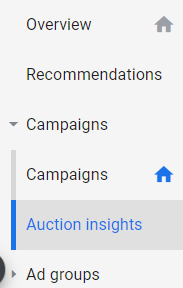23rd July 2020
How to Discover Your Online Competitors
Many ecommerce sectors are currently very crowded spaces, with many businesses competing for customers online. With COVID-19 having a huge effect and consumers being cautious about their spending, it is even more challenging to attract and retain customers. In this article we will explain how you can discover your competitors from a digital marketing point of view – so that you can see what they are doing and how you can top them.
How to briefly see who your competitors are
The easiest thing that you can do to find competitors is to type keywords related to your business into Google. You will be flooded with both organic and paid search results and you will get a broad idea of who is advertising on your keyword, how they phrase their messaging, and whether their products are available on shopping results. You will be able to see prices, delivery times, reviews and more.
However, this method is not very effective as it only gives you information for a very specific moment in time – and just because another website is at the top of the search results, doesn’t necessarily mean the business is a direct competitor, or the only one you should be looking into. If you need something more comprehensive, keep reading.
Check who your competitors are through Google Ads
You might think that you know who your competitors are, but you might be surprised that it is not as simple as you may think. Some of your traditional competitors that you see on the high street might not have any online presence. But on the other hand there might be some online retailers that you never heard of who are very active on Google Ads and could be scooping up your potential customers.
How to check who your competitors are on Google Ads
Log into Google Ads and click on the Auction Insights icon in the left panel.
Image

On the right side of the screen you will then see a table with data about your competitors.
What can you do with the Auction Insight data?
Unfortunately, we can’t give you a screenshot of what we can see in Google Ads, as that contains data about our real customers, but there are lot of things that you can do with the data once you take a look at your own.
The most obvious thing is that you will be able to see who your competitors are and how active they have been during the specific date range. The most useful data that you will get from an auction insight is Search Impression Share. This metric tells you how often your ads appear on Google in comparison to your competitors. It’s very valuable data as it tells you if your spend on advertising is significantly higher or lower than other bidders.
However, impression share is not a race or a competition; if your score is much higher or lower it only means that you are spending either more or less on advertising than your competitors. If you are spending more, that’s great - but you should make sure that you are getting value for your money. If you are a retailer, your ROAS (return on the ad spend) should be in line with your business objectives. If you run lead generation campaigns, then you should keep eye on the cost per conversion and ensure that it is also in line with your business objectives.
On the other hand, if your impression share is lower than your competitors’, don’t worry. It might be that you compete with companies much bigger than yours. In this case, you will need to be really smart with marketing objectives and what works for you. You might want to target specific keywords or audiences to ensure that you only advertise what matters for you.
What else can you learn from auction insight report?
If you can read between the lines, you can find out things that your competitors would not like you to know. You can segment data by month, week or day. Then you can track the activity of a single competitor. If you see a sudden drop in the impression Share in the middle of the month, it might mean that your competitor is running out of budget. Sudden spike in Impression Share in May? It could mean that your competitor now has a higher marketing budget and you should be prepared for it. Sudden drop in a daily Impression Share? It could mean that your competitor made a mistake and accidently paused their advertising, or ran into a billing problem.
It is important to note that that your auction insights reports are available not only on the account level but also on the campaign level. This means that you can track more precisely where your competitors are active and what’s important for them. For example, if you have a campaign that is targeting luxury brown shoes, it is worth checking who else is interested in similar products. Then you can carry on your investigation further and see if your competitor is interested in other types of shoes as well. You could go to their website and see how their creatives, landing pages, and messaging compares to yours. The opportunities for discovery are endless!
Is your online competitor always your enemy?
If you conduct your auction insight report, you might want to check your brand keywords and see who is competing on them. If you are bidding on the same keywords as your competitor, it might be a good idea to reach out and see if you could reach a mutual agreement not to bid on each other’s keywords. The so-called bidding wars can be extremely costly and they might not benefit your business at all.
How to use benchmark reports
If you are a more advanced retailer and you actively advertise on Google Shopping, then you can access benchmark reports in your merchant centre.
After logging into the benchmark report, click on Growth and then Price Competitiveness on the left side of the screen.
Image
Then on the right side you will see some interesting metrics. You will see what percentage of your products are above the benchmark price and what percentage of products are below the benchmark price. Then if you click on ‘View Submitted Products’ you will be able to see data for specific products and whether they are above or below the benchmark. Unfortunately, this report does not tell you exactly who your competitors are. However, based on the Google data, you can see how your price compares on the market and then based on your margins you can decide to either decrease or increase it.
How to discover your competitors’ strengths and weaknesses
SEMrush is a very powerful tool that can give you an overview of the strengths and weakness of your competitors. For example, you will be able to check the traffic analytics report, which will give you data about visits, visitors and bounce rates in the recent months. You can also discover keyword gaps of your own based on what your competitors are doing.
In this article we have explained how to use auction insight reports and we touched upon SEMrush opportunities. It’s important to remember that competitors are constantly evolving, and it is crucial for every business to monitor what others are doing. If you would like help with any of these issues, please get in touch with SilverDisc.






